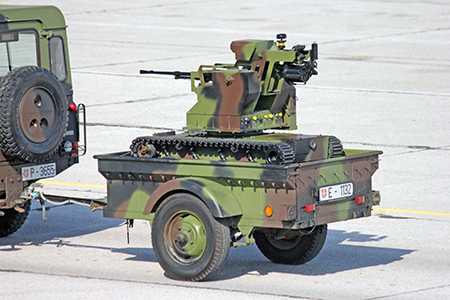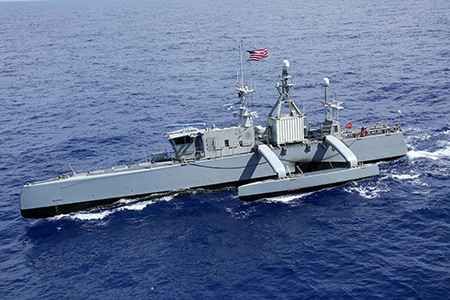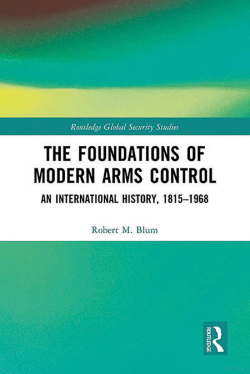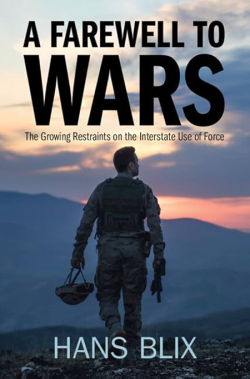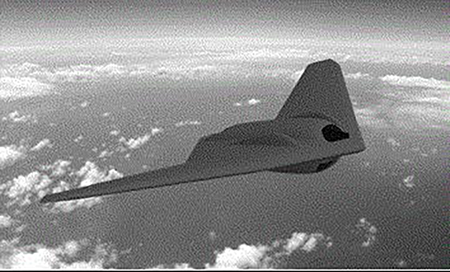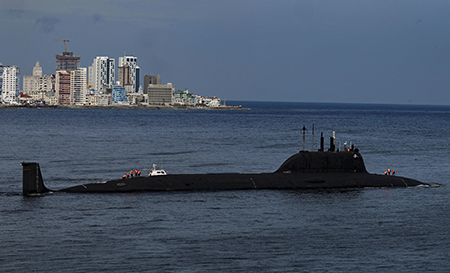January/February 2025
By Almuntaser Albalawi
The risk of a regional war in the Middle East is now at its highest in decades, with the threat of further escalation, proliferation, and even the use of nuclear weapons or attacks on nuclear installations a real possibility. A direct confrontation between Israel and Iran could trigger major shifts in the nuclear doctrines of regional states and, beyond that, further undermine nonproliferation norms in the region and the nuclear Nonproliferation Treaty (NPT) regime more generally.
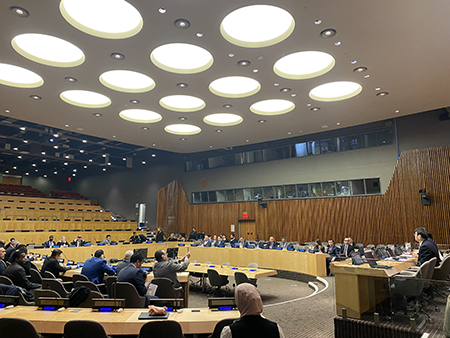
The prospects of a return to the 2015 Iranian nuclear deal remain remote, and regional arms control issues are rarely on the agenda of ongoing, high-level political and security talks. Moreover, nuclear rhetoric among elites in the region who advocate for the development of nuclear weapons, their use in conflicts, or the targeting of nuclear infrastructure further exacerbates the situation.
This alarming scenario is becoming more plausible due to the stagnation of the international nonproliferation regime and regional arms control diplomacy. Internationally, bilateral and multilateral disarmament and arms control regimes are in danger of becoming dysfunctional. Geopolitical tensions, threats of nuclear use, the expansion of nuclear stockpiles among nuclear-armed states, noncompliance issues, and a lack of progress in honoring past commitments and advancing beyond them have resulted in a loss of credibility and deadlocks within these regimes.
For years, NPT states-parties have discussed nuclear risks in the Middle East extensively, but failed to reach consensus on a final document at their last two NPT review conferences, reflecting widening global disagreements on the path forward for the global nonproliferation regime. The chances for a different outcome at the next review conference in 2026 also look bleak.
More robust and creative efforts are needed to go beyond the traditional nonproliferation tool kits and to facilitate and revitalize regional arms control initiatives in the Middle East. Against this backdrop, the five-year-old conference mandated by the UN General Assembly on the establishment of a Middle Eastern zone free of nuclear weapons and other weapons of mass destruction (WMD) is the only existing forum where regional states currently discuss regional arms control.
Although this conference’s relevance should be higher than ever, it has received too little attention in the policy domain. The conclusion of the fifth annual session of the conference in November provides a timely opportunity to reflect on what has been achieved so far toward establishment of the zone, what challenges have emerged over the past five years, and how the conference impacts global nonproliferation and disarmament diplomacy.
Despite some noteworthy progress, including fostering dialogue among participating states on reducing WMD risks in the region, more work still is needed to sustain momentum in the future. This includes steps that the conference could take to strengthen its work and draw absent parties into the process. It is also essential that the conference explore potential implications for the NPT review process, given the interlinkages and interdependencies between the two processes.
The Middle Eastern Zone Conference
Since the UN General Assembly adopted decision 73/546 in 2018 to negotiate a legally binding treaty establishing a Middle Eastern zone free of nuclear weapons and other weapons of mass destruction, five sessions have been held. The first session, in 2019, issued a political declaration emphasizing the inclusivity of the process. The declaration also included nonbinding political commitments, such as refraining from measures that prevent the achievement of the treaty’s objectives.1 Although adherence by states is uneven, these commitments still carry political and normative weight.
By extending an open-ended invitation to all states in the region to join, conditioning the adoption of the treaty to the consent of all invited states, and committing them to pursue negotiations on the basis of arrangements freely arrived at by consensus—a principle that Iran and Israel regard as essential—the conference participants attempted to alleviate some concerns about the process, including of states feeling outnumbered in such a regional forum or disadvantaged in decision-making.
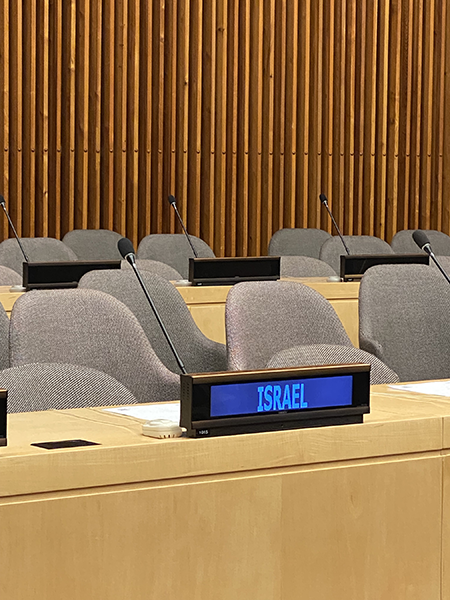
Participating states hoped the decision regarding modalities would encourage Israel’s participation and ensure the continued participation of other key states and observers from the five nuclear-weapon states recognized under the NPT. Yet, the outcome was not realized for Israel or the United States. Israel’s main objections to the process are that it is held under UN auspices, is limited to weapons of mass destruction, and precludes discussion on regional security. Israel also noted that the Arab Group did not consult it before submitting the proposal on establishing the conference to the General Assembly.
In its second session, held in 2021 after the 2020 session was postponed due to the COVID-19 pandemic, the conference adopted rules of procedure and formally established that decisions on substantive and procedural matters would be made by consensus.2 Recognizing the complexity of issues that the conference would have to discuss and the additional time needed for deliberations, the second session also created a working committee and an intersessional process between annual sessions. The working committee may report its work to the conference, but its outcomes are not binding.3
The informal status of the working committee, with its closed-meeting format and voluntary reporting requirements, provided some advantages. It allowed for deliberations to continue in depth between annual sessions, including engagement with external experts and scheduling technical briefings for delegates. It also allowed for informal discussion on technical and contentious topics, even in the absence of key relevant parties, without prejudice to the future work of the conference, positions, or options.4
Evolving Discussions and Views
During the second session, Kuwait, the session president, proposed initiating thematic discussions based on a comprehensive list of elements relevant to the future treaty.5 The ensuing exchange on contentious issues served as an informal guide for the topics discussed in subsequent sessions. States have used the annual sessions and working committee meetings to exchange views and build proposals, gradually forming their preliminary positions on elements of the treaty. Yet, participating states have stated consistently that conference discussions and statements should not be considered final positions or conclusions on any topic, given Israel’s absence.
The conference outcome documents show initial agreement on the future treaty’s general obligations and its ultimate objective of “enhancing regional and international peace and security through the complete elimination and prohibition of nuclear weapons and other [weapons of mass destruction].”6 To maintain consistency with their existing obligations, states mostly agree that the proposed zone treaty should be based on the three bedrock WMD treaties: the NPT, the Biological Weapons Convention (BWC), and the Chemical Weapons Convention (CWC).7
Using these existing treaties as a basis has helped the conference identify unexplored, region-specific issues for further consideration. Many of these issues, such as additional obligations and verification measures, institutional arrangements, and entry into force, are topics that still need further discussion in subsequent sessions.8
Verification is one of the most discussed topics in the ongoing deliberations. The conference agreed to build on existing international organizations, namely the Organisation for the Prohibition of Chemical Weapons (OPCW) and the International Atomic Energy Agency (IAEA), for verification mechanisms to avoid duplication. The unique scope of the zone treaty mandate and regional circumstances, however, have raised the issue of supplementary verification mechanisms to increase confidence in compliance. States have different views on the level of verification required to ensure compliance. Although some states hold that the regional circumstances require additional verification measures, others oppose adopting any measures that exceed those under the NPT, BWC, and CWC.
Such differences highlight the need for more technical and policy advice to supplement the states’ views and proposals, which could bridge gaps and advance negotiations. For example, technical advice could build a better understanding among states about the advantages and disadvantages of including regional verification measures to the BWC or the IAEA additional protocol as an obligation under the treaty.
Meanwhile, although most states recognize in principle the need for ratification of the NPT, BWC, and CWC by all states invited to the conference prior to the zone’s entry into force, views differ on timelines and implementation modalities, including for nuclear disarmament. One school of thought, raised by Iran, holds that disarmament and dismantlement should take place before states join the treaty and before the treaty enters into force. Proponents of the other school of thought, led by Egypt, advocate for more flexibility in considering different arrangements for dismantlement, including after the treaty enters into force or before it is ratified.9
Given regional nuclear energy plans as well as economic and development needs, peaceful uses and technical cooperation remain another heavily discussed issue. Participating states were explicit about avoiding a politicization of obligations that could restrict access to these technologies. Several proposals were put forward to promote and facilitate international, regional, and subregional cooperation, including a proposal for a fuel production consortium. There is convergence around the importance of creating regional mechanisms for promoting peaceful uses of nuclear energy and cooperation, but opinions diverge on their model and scope.
In the same context, the topic of unilateral coercive measures, such as sanctions, continues to create disagreement among states. Iran holds that the future treaty should provide assurances against such measures.10 Other states, although recognizing the illegality of these measures, feel that the conference is not the right forum to address this matter.11
The Impact of Regional Crises
The fourth and fifth conference sessions, in 2023 and 2024, respectively, took place during an especially difficult time in the region. Hamas’s attack on Israel on October 7, 2023; the subsequent Israeli wars in Gaza and Lebanon; and the risk of wider regional escalation added to existing challenges for the conference. Some observers say the Hamas attack is likely to solidify Israel’s positions, including a belief that the conference in its current scope harms Israeli security interests and thus makes Israel far less likely to engage with the conference any time soon.12 Some states disagree, arguing that participation is without prejudice to national security interests because the conference’s current modalities protect against such undesired outcomes.13 Others say that the catastrophic loss of civilian lives and prolonged humanitarian suffering in Gaza and Lebanon, coupled with implicit and explicit threats by Israeli officials to use nuclear weapons in Gaza,14 make it difficult for Arab states to engage with the current Israeli government in the conference work and not to condemn its actions despite seeing the urgent need to bring Israel into the conference process.15
Despite the regional volatility, the last two conference sessions witnessed notable procedural and substantive progress. The conference improved its working methodology by appointing the incoming presidents at the end of the previous annual session. This allows them, with input from participating states, to set the agenda of the working committee or any other intersessional body from the start of their term, culminating in the annual conference.16
The fourth session adopted for the first time a substantive summary of the working committee’s work, reflecting views and deliberations on elements of a future treaty. Yet, the fifth session reversed course and only accepted reporting in an informal “president’s summary” format. Such a format impacts other associated outcomes of the intersessional work, such as the index of topics developed to guide future annual sessions, which currently lacks official status because it was only annexed to the president’s summary. Some states supporting such an informal reporting format may be concerned about making substantive views and outcomes of the committee’s work binding, but this approach could advance the conference work by establishing institutional memory.
Another first during the fourth session was a closed-door regional meeting held in June 2024 in Doha to support the conference’s work. The meeting brought together senior representatives of the participating states to discuss the challenges and the way forward for the conference. Held alongside the third Arab Forum on Non-Proliferation, Disarmament and Arms Control, one of the largest regional nonproliferation and disarmament forums in the region, it enabled delegations to engage with senior officials and experts from regional capitals, the NPT nuclear-weapon states, and international organizations on various zone-related issues.
Building on the insights gained during the Doha meeting, the fifth session resumed the discussion on reviewing the conference work and exchanging ideas for future sessions. The conference identified Israel’s absence as the key challenge to the process and discussed options for engagement, including establishing a contact group to communicate with absent parties and tasking successive presidencies to work on this with the UN secretary-general. Additionally, the conference explored proposals for strengthening its work, such as improving substantive reporting, documenting agreements to serve as building blocks for future negotiations, and establishing a group of former conference presidents to advise on promoting structured discussion and progress in future sessions.
Future Conference Sessions
Despite the slow pace, the conference process serves the fundamental goal of keeping the zone initiative alive during declining multilateralism, high distrust, and conflict. It also has created an ongoing formal dialogue among regional states about elements, concepts, and architecture of the future Middle Eastern WMD-free zone. Such a dialogue fosters a better understanding of states’ positions and concerns while also providing a platform for ideas that could alleviate some of the regional tension around WMD risks. Still, successful conclusion of the treaty remains uncertain as long as key challenges remain unresolved, such as Israel’s rejection of the conference and disagreements over strengthening the conference’s substantive work, ongoing regional noncompliance issues, and unsafeguarded WMD activities.
Discussing these challenges during the fifth session was a positive step, but the proposals for tackling these issues still need further clarification and formalization. For instance, proposals focused on sequencing discussion based on the index of topics and documenting agreements as building blocks for the treaty text need to be negotiated further to decide how they will be incorporated into the working methods and practices.17 Some elements might need to be adopted as decisions by the conference.
Strengthening substantive work is also linked to the broader question of how to advance negotiations in the absence of key parties. Ideas raised so far include starting to negotiate text elements of a future treaty or even drafting the preambular elements and general provisions known as the “draft zero,” which can be put forward before formal negotiations start and was recently suggested by some states.18 Mauritania’s remarks during the fifth session alluded to the option of drafting the treaty without the participation of absent parties.19
In the absence of a decision on this matter, states may focus on making the current substantive discussions more efficient and targeted, allowing the conference to continue laying the groundwork for negotiations. For example, the conference could encourage an open discussion about any concerns regarding topics left over from past sessions that may be considered when negotiations reach the drafting stage and identify possible solutions for these contentious topics.
Another idea involves including experts from relevant governmental agencies at the conference sessions and working committee meetings. This would strengthen delegations’ capacities and the level of instruction, coordination, and authority. The proposal made during the fifth session to establish a sponsorship program and encourage voluntary contributions to support wider participation by specialists and officials from states with limited resources could support these efforts.
Israel’s absence and, to some extent, the United States’ absence as an observer are viewed as a key challenge to the process. The treaty will hold little value without the participation of all regional states, especially those believed to possess weapons of mass destruction or those aspiring to acquire them.

Regional circumstances may not be conducive to significant progress now. Nevertheless, the conference could still take steps to make its work more appealing to Israel by providing it and the United States clarity on two issues that traditionally have been of utmost importance to Israel. First is the level of guarantee that the future treaty will provide concerning compliance and enforcement, including verification measures and compliance and enforcement mechanisms. Second is the scope of the treaty, particularly whether delivery systems will be included, and the extent to which the conference is willing to broaden the range of discussions to include other threats of relevance to Israel and the conference’s mandate. The conference also could consider inviting nonofficial experts from Israel and the United States to the informal working committee meetings. The aim would be to better understand the positions of absent parties and help identify venues and opportunities for engaging their officials in the future.
The conference should also consider enhancing civil society participation to expand regional participation and expert representation. Accredited nongovernmental organizations currently can attend the opening, closing, and general debate sessions but not the thematic debate, which comprises the majority of conference time. Furthermore, there are no segments designated for their statements during the conference, making it unappealing and financially unattainable to travel to New York merely to attend open sessions that are live streamed.
As a precedent, the president of the fourth session held an informal open meeting with civil society representatives on the margins of the conference. Two youth regional civil society representatives were also invited to share their perspectives during the Doha meeting in 2024. Another precedent was holding the first side event, open to both delegates and civil society, held by the UN Institute for Disarmament Research on the margins of the fifth session.20 More of these efforts are needed to enhance the process by increasing transparency, inviting civil society to support the process, and developing ideas to address current challenges.
The NPT Review Conference
The fifth session called for increased engagement with relevant international forums and their members, including the NPT, to promote the conference goals and request the inclusion of relevant issues in the outcome documents of the NPT review conferences and preparatory committee meetings.21 This involves mobilizing political support and urging NPT states, including the three NPT depositary states, to uphold their responsibilities toward the establishment of the zone. This renewed attention to the interlinkages between the conference and other parallel processes, mainly the NPT, has possible implications for the review cycles.
Since the first zone conference session, in 2019, participants have been optimistic that disagreements over the language in the NPT final document concerning the zone could be prevented as a reason for breaking or preventing consensus during NPT review conferences. This was the case during the 10th NPT Review Conference, in 2022, when compromise language on the zone was agreed.
Two factors make it challenging, however, to predict how the zone and Middle Eastern issues will impact the dynamics of the future review conference negotiations. First, discussions on nuclear risks in the Middle East during the review conference are tied closely to the ever-changing political and security situation in the region, particularly regarding Iran and Israel.
Second, although the Middle Eastern resolution adopted by the 1995 NPT Review and Extension Conference serves as the terms of reference for the zone conference, participating states have not clearly defined the relationship between the zone conference and the NPT. Most participating states view the two as parallel processes or the conference as a venue for discussing the implementation of the 1995 resolution rather than replacements for one another. They affirm that past commitments made by the NPT conferences remain valid and that NPT states are still expected to contribute to the establishment of the zone. Yet, it remains unclear how or what exactly these expectations entail.
During the 2026 review conference, it can be expected that the Arab Group and Iran will seek language in the outcome document that endorses the zone conference process and calls for full participation by all regional states. Some states, particularly Iran, which expressed dissatisfaction with the language agreed by the United States and Egypt during the 2022 review conference, may push for stronger language, including explicit condemnation of Israel’s nuclear threats.22 Such a push is likely to receive support from the Arab Group, given the current regional dynamics.
Although it is impossible to decouple the NPT negotiations from regional politics, clarifying expectations ahead of the conference could reduce risks for both processes. One way to do that is to decide that substantive deliberations related to the zone would take place at the zone conference while the NPT continues to serve as a venue for seeking political support and consultations on broader challenges to the process. Delegating contentious substantive matters to the zone conference would preserve the time at the NPT review conference for negotiating all the other regional and nonregional specific issues and reduce the likelihood of disagreements.23
ENDNOTES
1. UN General Assembly, “Report of the Conference on the Establishment of a Middle East Zone Free of Nuclear Weapons and Other Weapons of Mass Destruction on the Work of Its First Session,” A/CONF.236/6, November 28, 2019, p. 5.
2. The rules of procedures allow for voting in three limited cases: rulings on procedural motions related to the suspension of meetings, adjournment or closure of debate, and points of order as outlined in rules 10, 14, and 15. UN General Assembly, “Rules of Procedure,” A/CONF.236/2021/3, December 3, 2021.
3. UN General Assembly, “Establishment of a Working Committee to Continue Deliberations Among Members of the Conference on the Establishment of a Middle East Zone Free of Nuclear Weapons and Other Weapons of Mass Destruction During the Intersessional Period of the Conference,” A/CONF.236/2021/DEC.3, December 3, 2021, p. 1.
4. For example, the United Arab Emirates noted that the working committee serves as an avenue for discussing the steps required for making progress. Sudan emphasized that it could be utilized to discuss the concerns of all countries, and Kuwait remarked that it assisted in expanding Kuwait’s perspectives on how to move forward. For additional examples of how states referred to advantages of the working committee method and other related conference issues, see UN Institute for Disarmament Research (UNIDIR) Middle East WMD-Free Zone Compass, “Working Methodology of the UNGA-Mandated Conference: Working Committee,” n.d., (accessed January 1, 2025).
5. See UNIDIR, “Organization Meeting of the Working Committee of the Conference on the Establishment of a Middle East Zone Free of Nuclear Weapons and Other WMD in 2022,” n.d., (accessed January 1, 2025).
6. UN General Assembly, “Report of the Conference on the Establishment of a Middle East Zone Free of Nuclear Weapons and Other Weapons of Mass Destruction on the Work of Its Second Session,” A/CONF.236/2021/4, December 3, 2021 (hereinafter second session report), p. 4.
7. For more detailed views and statements by states on obligations, see UNIDIR Middle East WMD-Free Zone Compass, “Obligations,” n.d., (accessed January 1, 2025).
8. Some of these elements were highlighted in the second session’s report as issues the conference agreed to discuss further in subsequent sessions, also known as “Issues under Paragraph 51.” Second session report.
9. See Heidar Ali Balouji, Statement before the Fourth Session of the Conference on the Establishment of a Middle East Zone Free of Nuclear Weapons and Other Weapons of Mass Destruction, n.d., p. 1; Amir Saeid Iravani, Statement before the Fourth Session of the Conference on the Establishment of a Middle East Zone Free of Nuclear Weapons and Other Weapons of Mass Destruction, November 13, 2023, p. 4, ; Arab Republic of Egypt, Statement at the Third Session of the Conference on Establishing a Middle East Zone Free of Nuclear Weapons and Other Weapons of Mass Destruction, November 15, 2022, pp. 6-10,
(in Arabic).
10. See Heidar Ali Balouji, Statement on inalienable right to use technology for peaceful purposes and unilateral coercive measures before the Third Session of the Conference on the Establishment of a Middle East Zone Free of Nuclear Weapons and Other Weapons of Mass Destruction, n.d.
11. UN General Assembly, “Report of the Conference on the Establishment of a Middle East Zone Free of Nuclear Weapons and Other Weapons of Mass Destruction on the Work of Its Third Session,” A/CONF.236/2022/3, November 21, 2022, pp. 5-6.
12. Ariel Levite, “An Israeli Vision of a Middle East NWFZ,” in Henry D. Sokolski, ed., “A Middle East Free of Weapons of Mass Destruction: A Utopia?” Nonproliferation Policy Education Center Occasional Paper, No. 2307, November 2023.
13. See “Inclusivity Versus Self-Isolation: The Pressing Issue of the United Nations Conference on the Establishment of a Middle East Zone Free of Nuclear Weapons and Other Weapons of Mass Destruction; Working Paper Submitted by the Russian Federation,” A/CONF.236/2024/WP.1, September 30, 2024.
14. Michael Bachner, “Far-Right Minister Says Nuking Gaza an Option, PM Suspends Him From Cabinet Meetings,” The Times of Israel, November 5, 2023; Sam Sokol, “Far-Right Minister Eliyahu: ‘Even in the Hague They Know My Position,’” The Times of Israel, January 24, 2024.
15. For example, the national statement by Kuwait during the fourth and fifth sessions of the conference rejected engaging the current Israeli government and supported the League of Arab States and Organization of Islamic Cooperation decision to document possible war crimes. See Statement of Kuwait, November 13, 2023, p. 7, (in Arabic).
16. UN General Assembly, “Report of the Conference on the Establishment of a Middle East Zone Free of Nuclear Weapons and Other Weapons of Mass Destruction on the Work of Its Fourth Session,” A/CONF.236/2023/4, November 20, 2023, p. 3.
17. UN General Assembly, “Report of the Conference on the Establishment of a Middle East Zone Free of Nuclear Weapons and Other Weapons of Mass Destruction on the Work of Its Fifth Session,” A/CONF.236/2024/3, November 22, 2024 (hereinafter fifth session report).
18. See Statement of Qatar during the fifth session on behalf of the GCC, n.d., p. 4,
(in Arabic).
19. See Statement of Mauritania during the fifth session, n.d., p. 3, (in Arabic).
20. The event featured a demonstration of UNIDIR tools for supporting the zone. See Almuntaser Albalawi, “UNIDIR Tools for Supporting the Middle East WMD-Free Zone,” November 19, 2024, posted December 13, 2024, by UNIDIR, YouTube.
21. Fifth session report.
22. 2020 Review Conference of the Parties to the Treaty on the Non-Proliferation of Nuclear Weapons, “Main Committee II: Summary Record of the 11th Meeting,” NPT/CONF.2020/MC.II/SR.11, October 25, 2022, paras. 75-76 (referencing 2020 Review Conference of the Parties to the Treaty on the Non-Proliferation of Nuclear Weapons, “Draft Final Document,” NPT/CONF.2020/CRP.1/Rev.2, August 25, 2022).
23. Almuntaser Albalawi, “A Balanced Approach to Addressing Nuclear Risks in the Middle East While Preserving the Treaty on the Nonproliferation of Nuclear Weapons,” Peace Review, Vol. 36, No. 2 (2024): 238-250.
Almuntaser Albalawi, a nuclear engineer and political scientist, is a researcher at the UN Institute for Disarmament Research. The views expressed are those of the author.

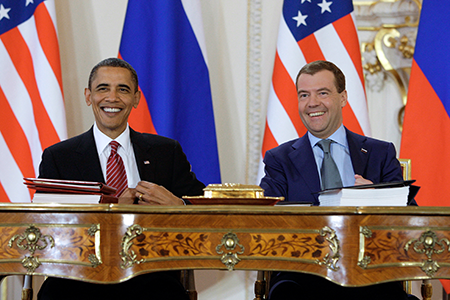
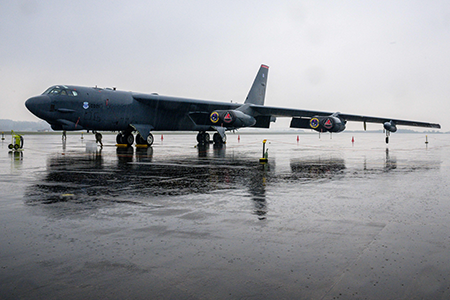
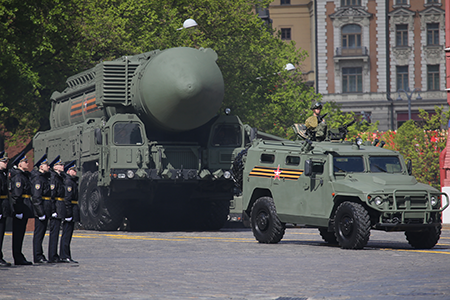
![Alexander Kmentt, director of the Disarmament, Arms Control and Non-Proliferation Department of the Austrian Ministry for Foreign Affairs, calls the present time a “critical juncture [that] demands urgent political leadership” to regulate lethal autonomous weapons. (Photo by Alex Halada/AFP via Getty Images)](/sites/default/files/images/ACT_Photos/2025_01/_ACT_JanFeb2025_Feature2_AW_Kmentt.png)
